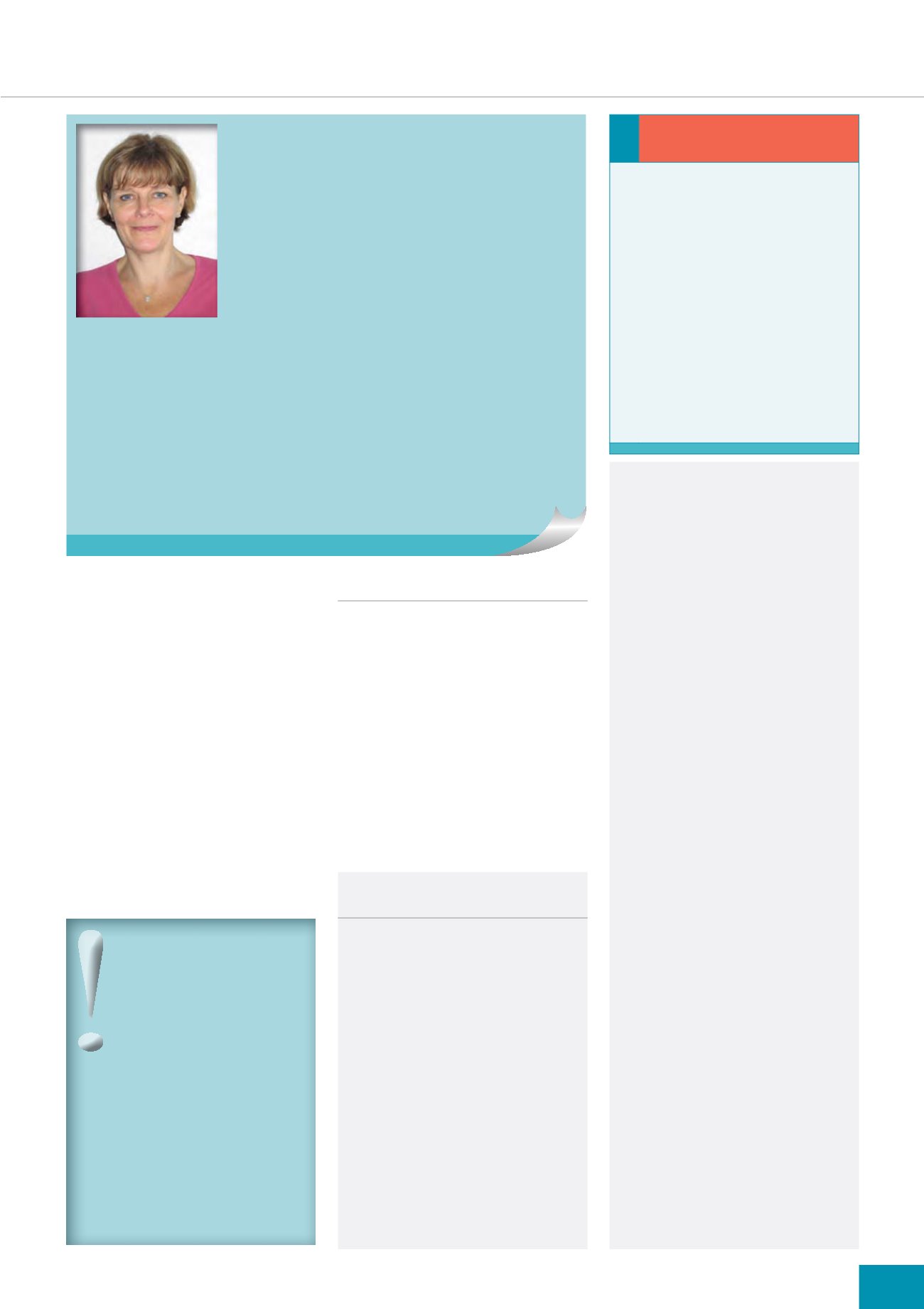
SKIN CARE TODAY
2015,Vol 1, No 1
41
thoroughly dried to prevent further
breakdown. Emollients should also be
applied to protect the skin and improve
its condition.
Davies et al (2007) recommended
an exercise regimen of ankle circling,
planter flexion and dorsiflexion to
improve calf muscle strength which,
in turn, may improve venous return.
It must be recognised that some
patients may not be able to perform
the exercises due to paralysis, weight of
the limb, or a fixed ankle joint.
Table 4
offers specific guidance
according to the cause of leg leakage.
FOCUS ON ‘WET’ OR ‘LEAKY’ LEGS
i
CONCLUSION
The cause of wet legs is often complex
and requires a full holistic clinical
assessment to establish the aetiology
of the problem and allow accurate
decision-making. Care planning should
be fully discussed with the patient
and relatives to ensure that there is
good understanding of the rationale
behind the treatment advised. Patient
education and involvement helps to
improve patient concordance, and,
ultimately, may influence successful
outcomes and patient wellbeing.
REFERENCES
Anderson I (2003)
Nurs Times
54
Atkin L (2014)
Br J Community Nurs
S22–S28
Beldon P (2013)
Wound Essentials
68–70
Davies J, Bull R, Farrekky I,Wakelin M
(2008)
Wounds UK
48–55
Delon M (2012)
Br J Community Nurs
S12–S17
EuropeanWound Management Association
(2003)
Position Document: Understanding
CompressionTherapy.
MEP Ltd, London
Franks PJ, Moffatt CJ, Connolly M, et al
(1995)
Age Aging
407–10
Franks P, Moffatt C, Doherty D (2006)
Wound Rep Regen
536–41
SCT
i
Practice points
i
Identify cause of leaking legs.
i
Treat the cause.
i
Encourage leg elevation and
going to bed at night.
i
Encourage taking exercise and
having a good diet.
i
Be aware that these patients are
susceptible to infection — fungal
infection should be considered in
recurrent infections.
i
Educate about good skin care,
including the use of emollients.
i
Compliance/concordance with
treatment is essential.
Harding K, Gray D,Timmons J (2007)
Int
Wound J
VXSSO
1–12
Hardy D (2010)
Wounds UK
138–45
International Lymphoedema Framework
(2012)
Position Document: Best Practice
for the Management of Lymphoedema
.
2nd edn. Available online at: http://
www.lympho.org/mod_turbolead/
upload/file/Resources/Compression%20
bandaging%20-%20final.pdf (last
accessed 20 February, 2015)
Moffatt C (2007)
Br J Community Nurs
supplement
S3–S4
Osborne K (2009) In:
Skills for Practice:
Managment of chronic oedema in the
community
.Wounds UK, Aberdeen: 24–31
Ousey K, Cook L (2011)
Practice Nurse
308–14
KeeleyV (2009) In:
Skills for Practice:
Management of chronic oedema in the
community
.Wounds UK, Aberdeen: 4–8
Lymphoedema Framework (2006)
Best Practice for the Management of
Lymphoedema.
International consensus.
MEP Ltd, London. Available online at:
www. woundsinternational.com
Rich A, McLachlan L (2003)
J Wound Care
51–4
Scottish Intercollegiate Guidelines Network
(2010)
Management of chronic venous leg
ulcers
. SIGN, Edinburgh
Tickle J (2013)
Wounds UK
77–81
Timmons J, Bianchi J (2008)
Wounds UK
59–69
World Union of Wound Healing Societies
(2008)
Principles of best practice:
Compression in venous leg ulcer : A
consensus document
. MEP Ltd, London
'LG \RX NQRZ
:LWK DQ LQFUHDVH LQ
ERWK WKH DJLQJ SRSXODWLRQ
DQG SDWLHQWV ZKR DUH
REHVH WKH SUHYDOHQFH
RI FKURQLF RHGHPD LV
ULVLQJ 7KH FXUUHQW GULYH
IRU PRUH SDWLHQWV ZLWK ORQJ
WHUP FRQGLWLRQV WR EH VHHQ
LQ WKH FRPPXQLW\ LQHYLWDEO\
PHDQV WKDW FRPPXQLW\ QXUVHV
DUH PRUH OLNHO\ WR EH LQYROYHG
LQ LGHQWLI\LQJ DQG PDQDJLQJ
SDWLHQWV ZLWK RHGHPD DQG LWV
DVVRFLDWHG FRPSOLFDWLRQV
Expert commentary
Kate Arkley, community nurse, tissue viability, Galway, Ireland
W
et or leaky legs can be extremely
debilitating for patients and the
impact on their quality of life cannot
be underestimated. Sadly, it is commonplace for
patients suffering with this health complaint to
have three pairs of slippers just to absorb the
constant drip... drip… drip. This article identifies
key aspects to help clinicians in establishing the
underlying cause, and provides practical everyday management for both
the patient and community nurse.
Given the many causes of ‘leaky’ legs, clinicians need to take a
strategic management approach using holistic assessment. Getting to
the ‘root of the problem’ is not straightforward and specific skills and
knowledge in contributory factors is a prerequisite.
Active management of chronic oedema can halt its progression
onto irreversible lymphoedema. Lastly, I would stress the importance
of assessing the whole limb, as well as the unaffected leg on clinical
examination. Chronic oedema may not be restricted to below the
knee only.


